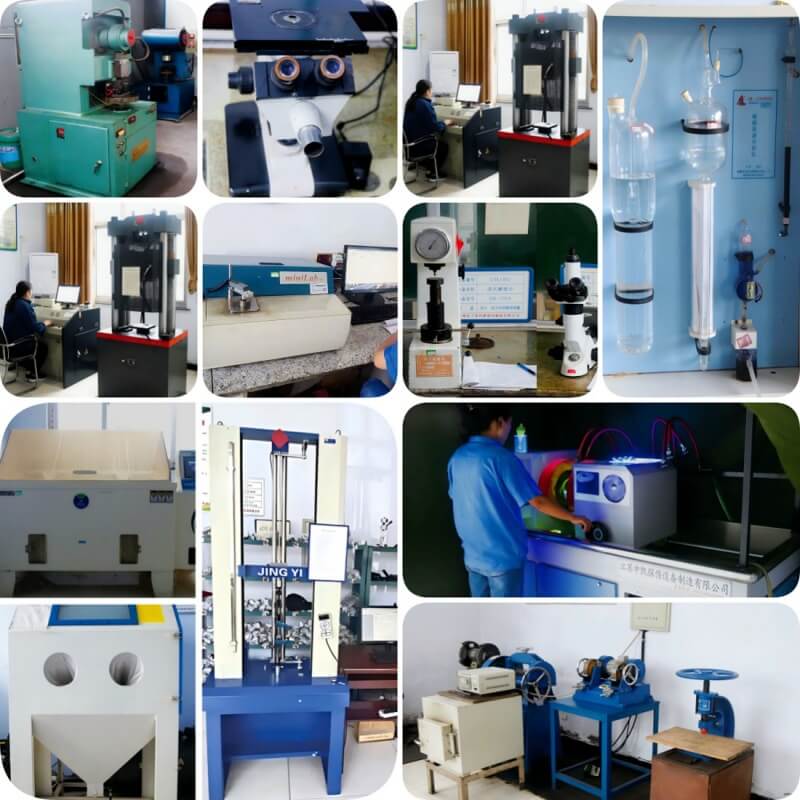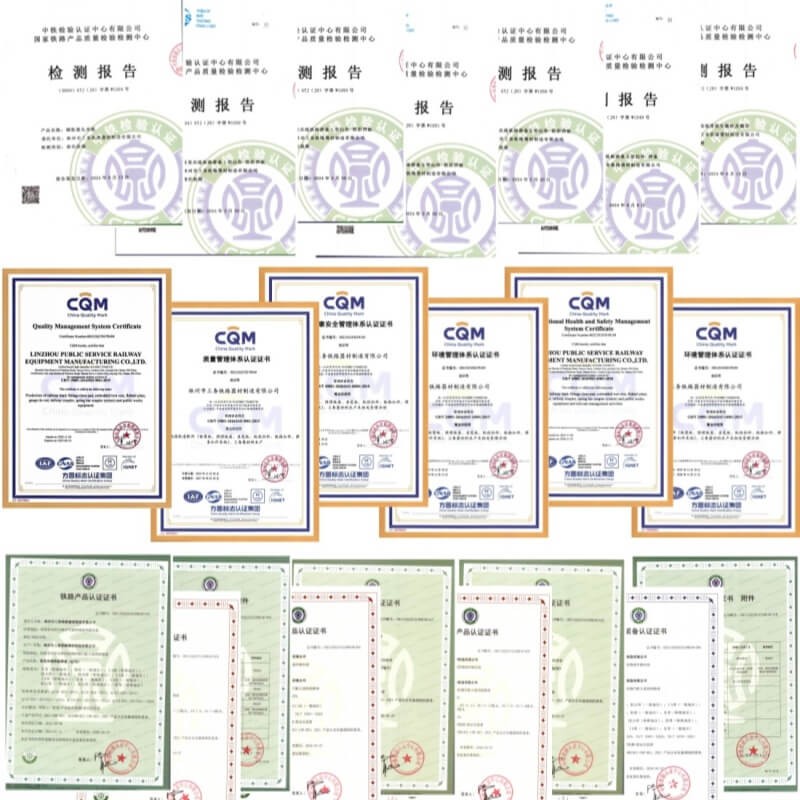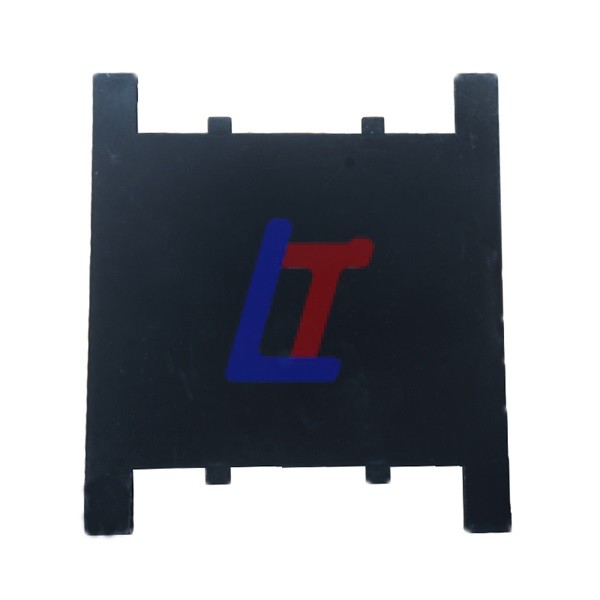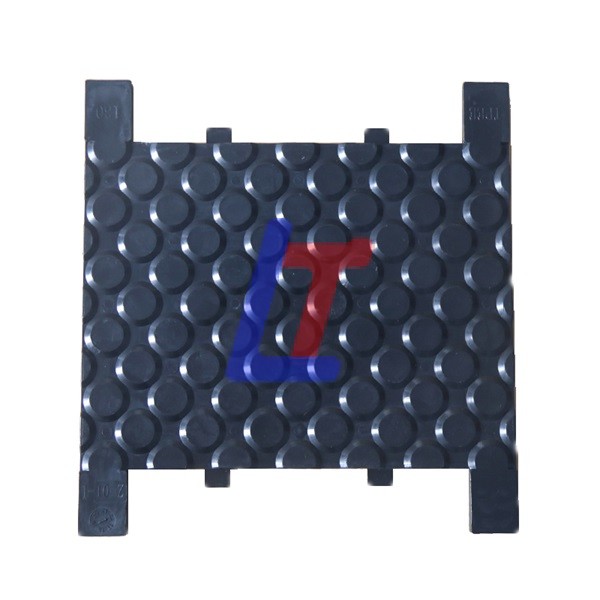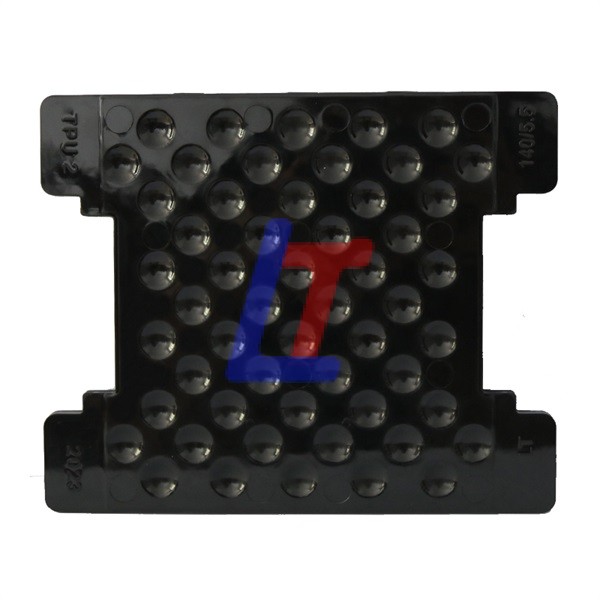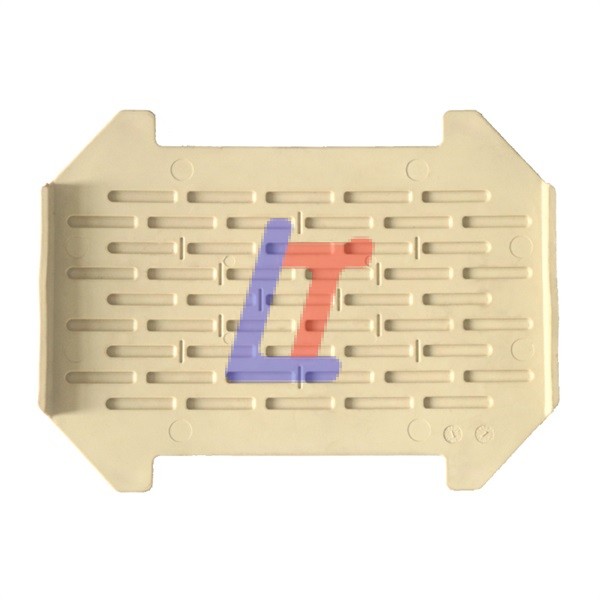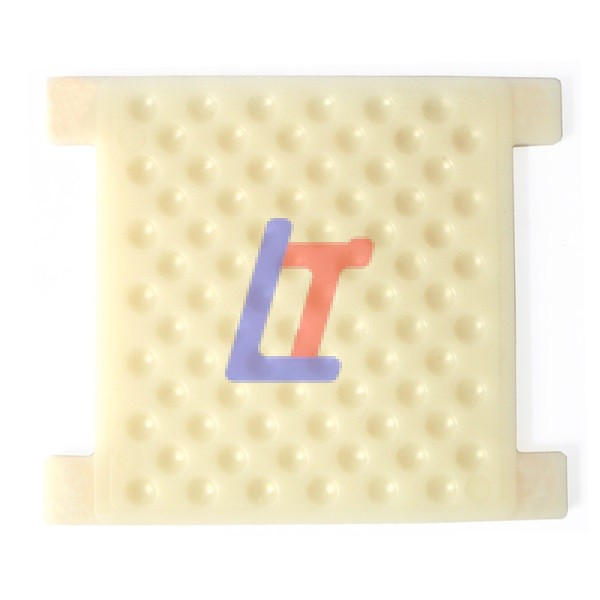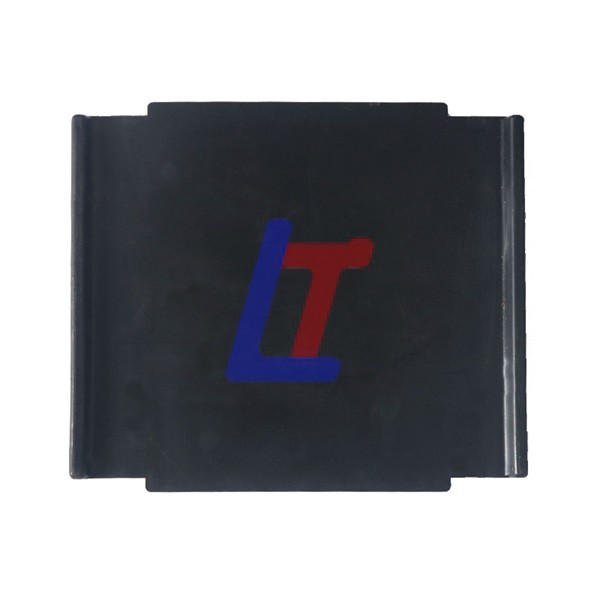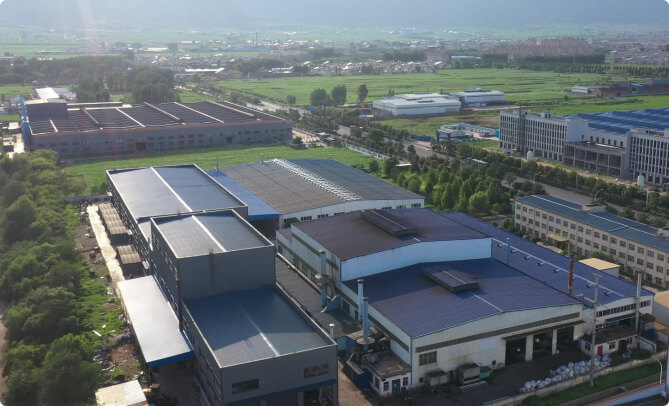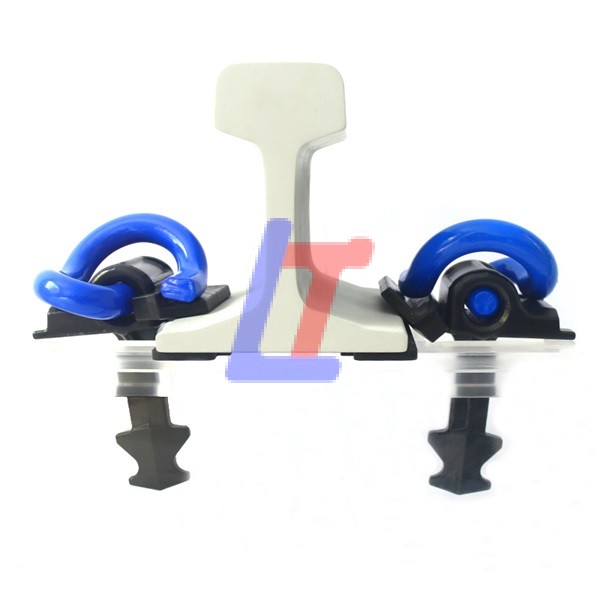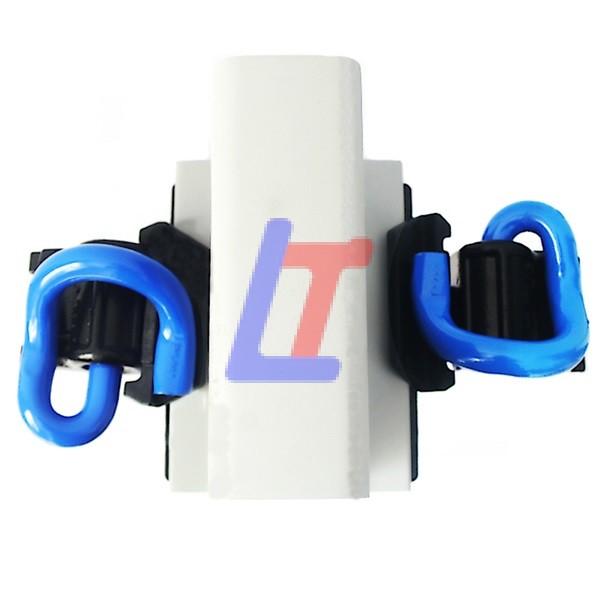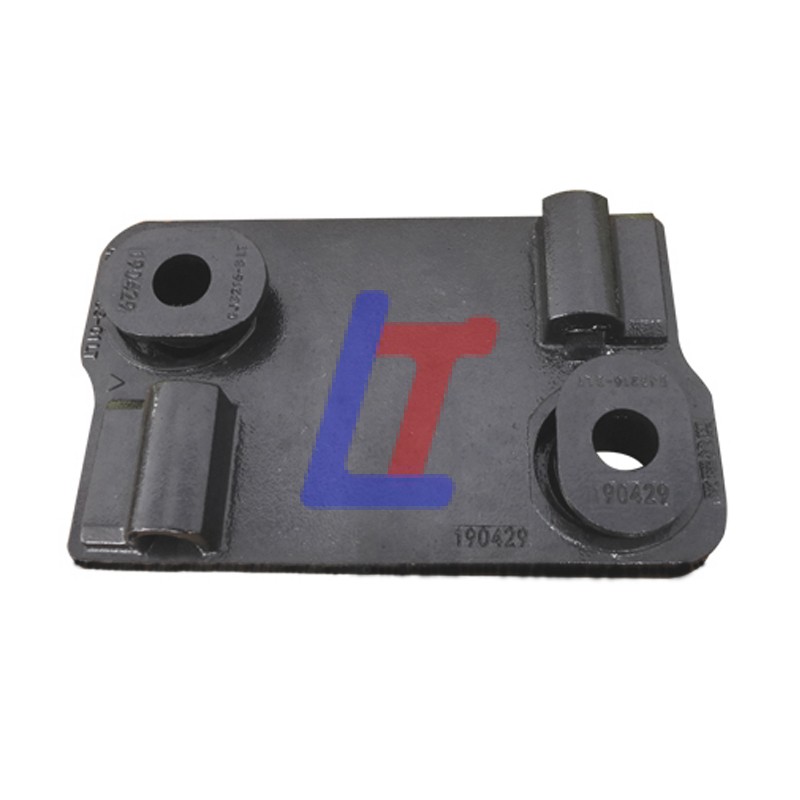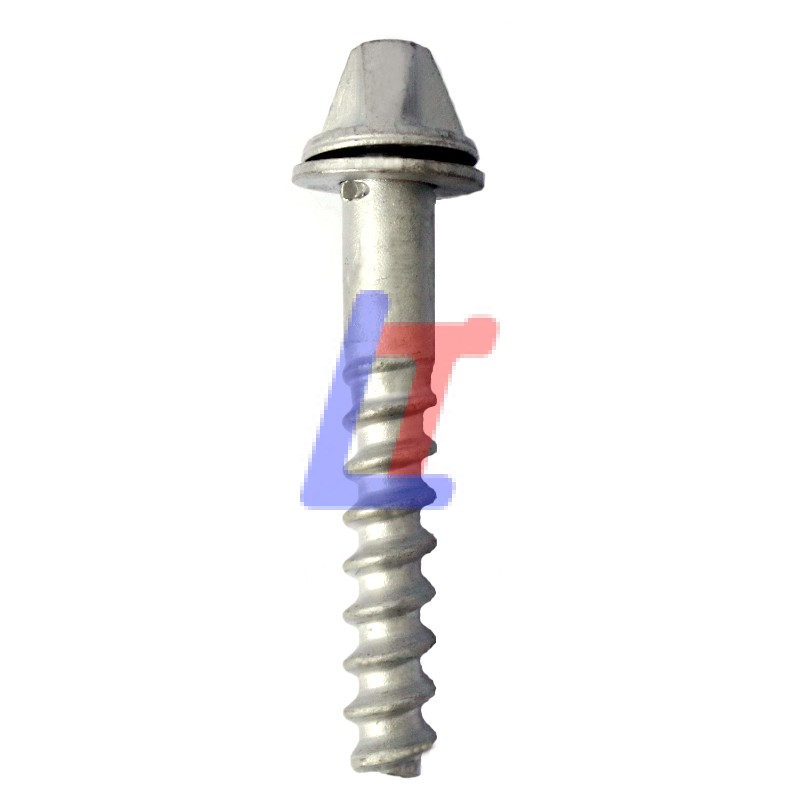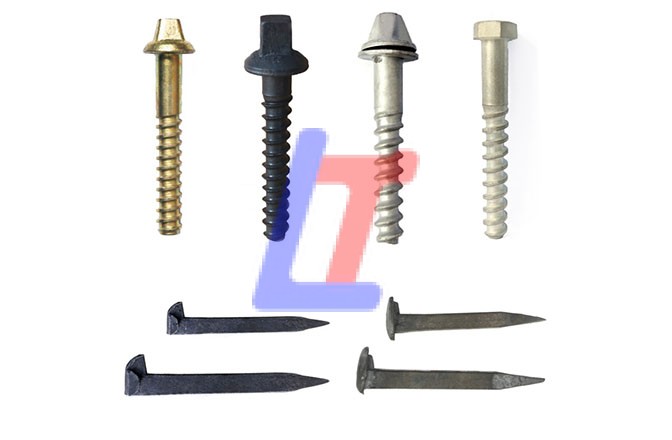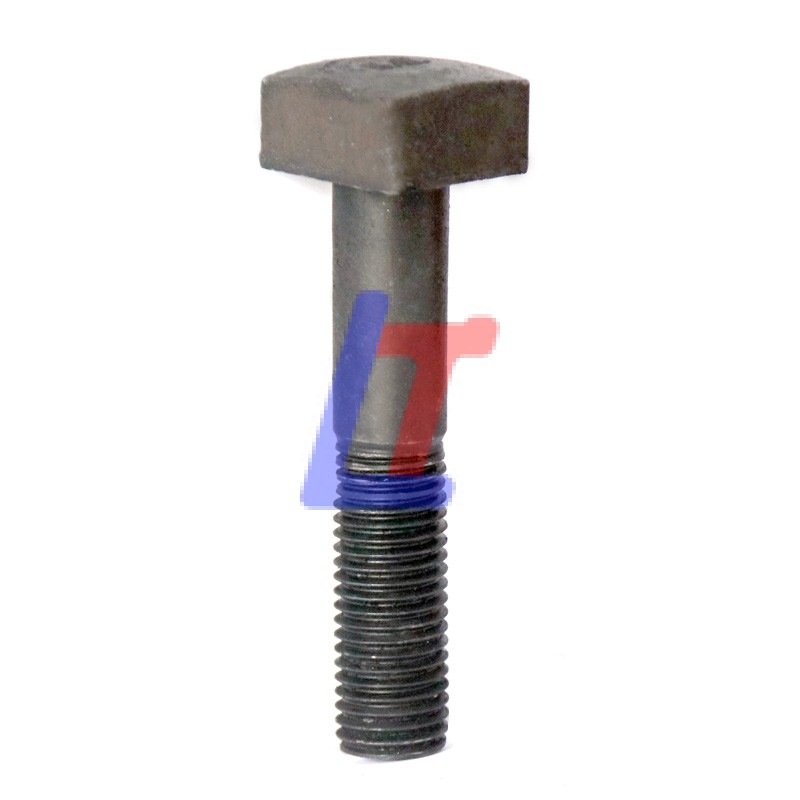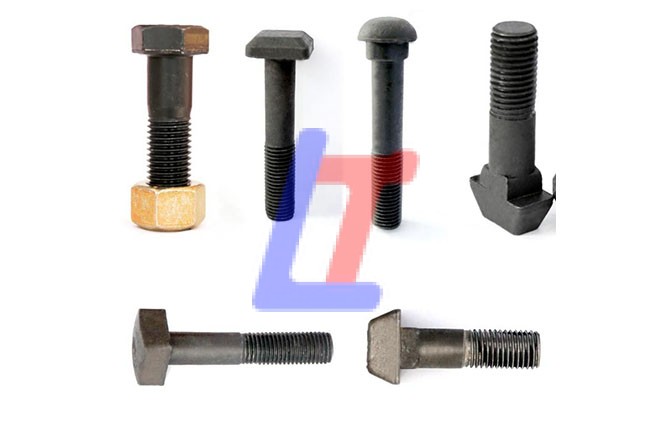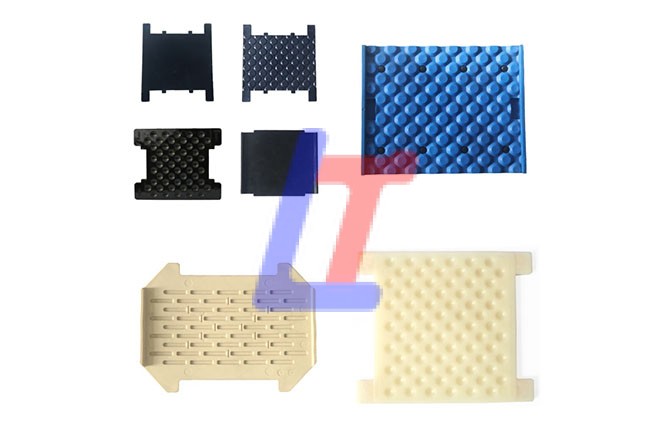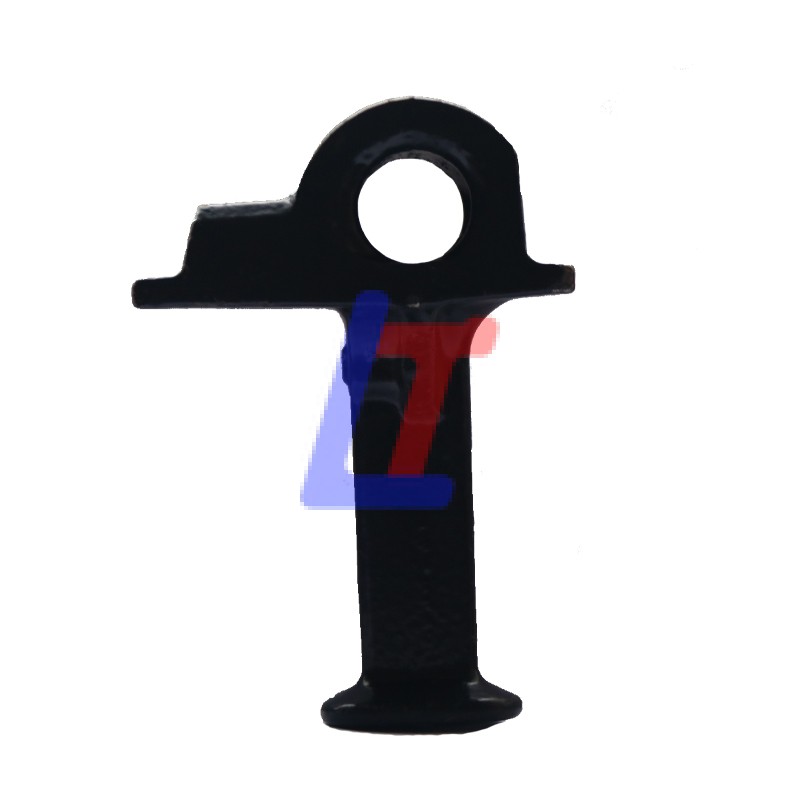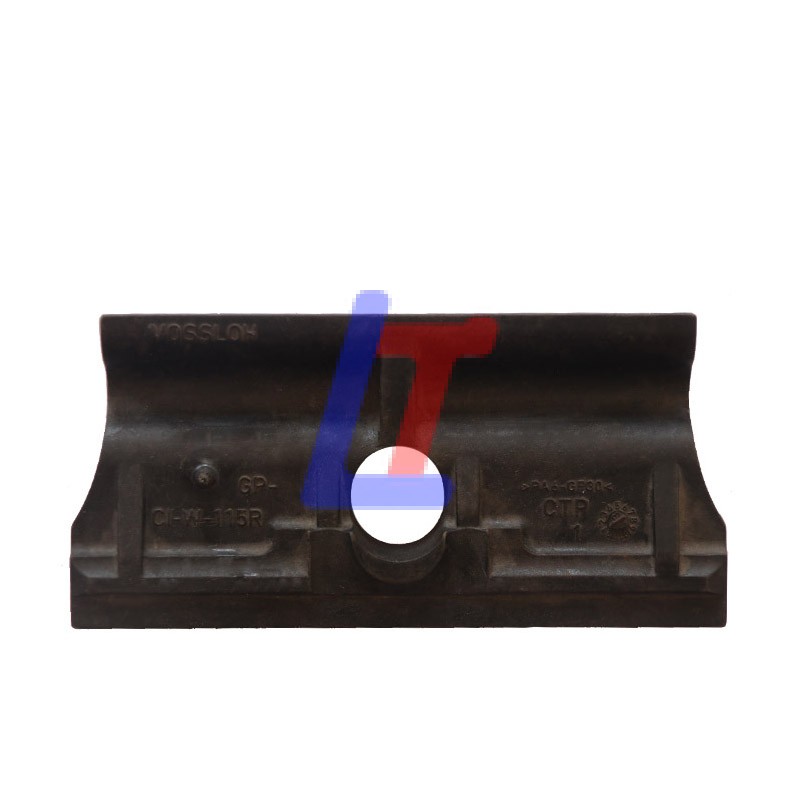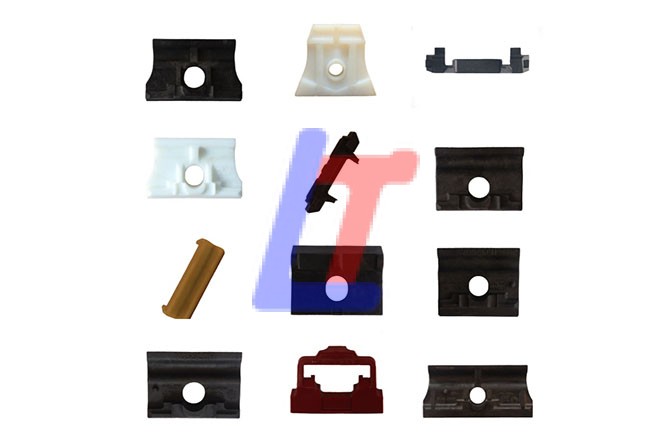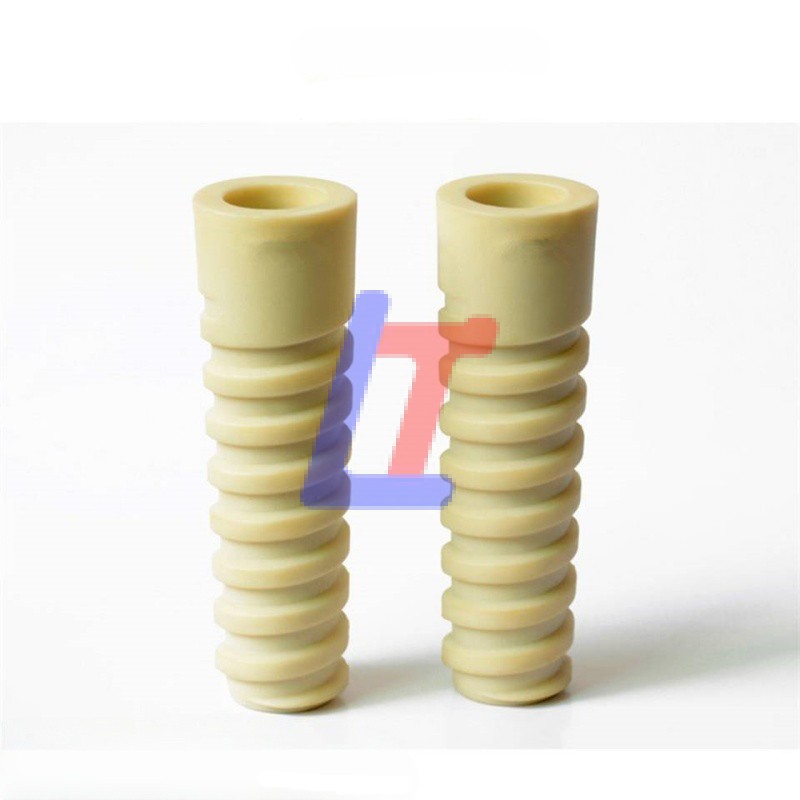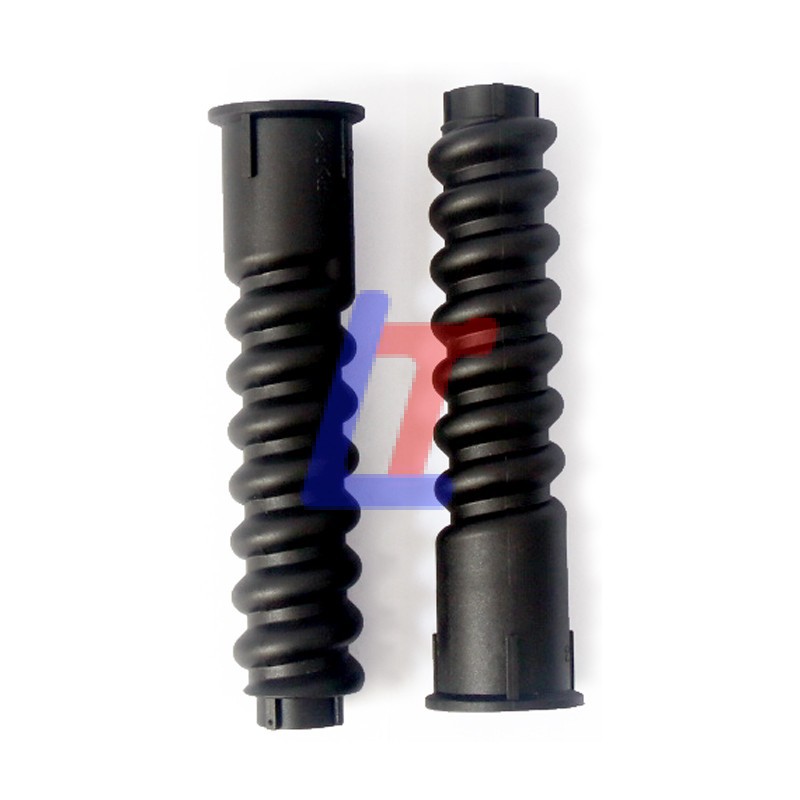Description of rail pad
The rail fastener system’s rail pad is an important component of the railway track, playing a crucial role in the railway track. It mainly includes the following aspects:
Functions of the rail pad
- Shock Absorption and Buffering: When a train is in operation, it will generate huge impact forces and vibrations on the track. The rail pads can effectively buffer these forces, reduce the wear and fatigue of track components, protect the subgrade and sleepers, and extend the service life of the track.
- Electrical Insulation: Firstly, the rail pad serves as a crucial barrier, effectively preventing the leakage of current in the track circuit. As a result, it ensures the normal operation of the railway signaling system. Moreover, by maintaining the integrity of the electrical system, it provides a reliable signal guarantee for the safe operation of the train.
- Adjusting Track Height and Level: Firstly, the utilization of rail pads with varying thicknesses and hardnesses provides a practical means for adjustment. Specifically, this allows for the fine – tuning of the track’s height and level. Consequently, it ensures the smoothness of the track. In turn, this smoothness significantly improves the stability and comfort of train operation.
- Load Dispersion: First and foremost, the rail pad plays a pivotal role in handling the forces. Specifically, it functions to evenly distribute the concentrated load that the train wheels impose on the rails. By doing so, the load is transferred to the sleepers and the subgrade. As a result, this process effectively avoids excessive local stress. Consequently, it serves as a safeguard, preventing potential damage to the subgrade and sleepers.
Classifications
- Classification by Laying Position: Taking the steel base plate as the boundary, it can be divided into the elastic cushion on the steel base plate and the elastic cushion under the steel base plate. The elastic cushion under the steel base plate is most widely used in the tracks in our country, such as the WJ-1 type fasteners and WJ-2 type fasteners of the ballastless tracks.
- Classification by Structure: There are flat plate structures, groove structures, and plate-nail structures. The elastic pads with groove and plate-nail structures provide high resilience through flexural and shear deformations. They have a fast elastic recovery speed and a low dynamic stiffness, which can give full play to the comprehensive usage effect of the elastic cushion.
Materials
- Rubber Materials: They have good elasticity, shock absorption performance, and insulation performance, and can effectively buffer the train load and vibration. However, rubber materials are prone to aging, and their service life is relatively short.
- HDPE Materials: They have relatively high rigidity and poor dynamic mechanical properties, but they have good wear resistance and corrosion resistance.
- TPEE Materials: They have excellent flexibility at room temperature and low temperature, as well as excellent resistance to flexure cracking, high elasticity, and good anti-stress relaxation and creep performance. They have a good, comprehensive performance.
- EVA Materials: They have the advantages of light weight, high elasticity, good shock absorption performance, and sound insulation performance, and are gradually being applied in railway under-rail pads.
Technical Specifications
|
Material |
Rubber, EVA, TPEE, HDPE, Composite material of steel plate and rubber |
|
Application |
43kg/m, 50kg/m, 60kg/m, 75kg/m,115RE, UIC54, UIC60, S49 |
|
Standards |
UIC, AREMA, TB/T2626-95 |
|
No |
Technical Parameter |
Unit |
Technical Requirement |
Value |
|
1 |
Density |
g/cm3 |
0.95-0.98 |
0.95 |
|
2 |
Tensile Strength |
Mpa |
≥19 |
19 |
|
3 |
Elongation |
% |
>80 |
150 |
|
4 |
Melting Point |
℃ |
170-190 |
190 |
|
5 |
Insulation Resistance |
Q |
≥1×1010 |
3.5×1010 |
|
6 |
Hardness |
A |
≥98 |
98(A) |
|
EVA |
||||
|
No. |
Technical Parameter |
Unit |
Technical Requirement |
Value |
|
1 |
Density |
g/cm3 |
0.95-0.98 |
0.95 |
|
2 |
Tensile Strength |
Mpa |
≥15 |
16 |
|
3 |
Elongation |
% |
>500 |
550 |
|
4 |
Melting Point℃ |
℃ |
170-190 |
170 |
|
5 |
Insulation Resistance |
Q |
≥1×1010 |
5.0×1010 |
|
6 |
Hardness |
A |
≥90 |
92(A) |
|
Rubber |
|||
|
No. |
Technical Parameter |
Unit |
Value |
|
1 |
Stiffness |
KN |
90-130 |
|
2 |
Hardness Shore A℃ |
℃ |
72-80degree |
|
3 |
Electronic Resistance |
Q |
≥106 |
|
4 |
Tensile Strength before Aging |
Mpa |
≥12.5 |
|
5 |
Elongation before Aging |
% |
≥250 |
Advantages
How to Find a Qualified Rail Fastener Manufacturer?
Why Choose LTRF?
- Strong Technical Expertise
LTRF boasts a dedicated R&D center. Moreover, it maintains long-term collaborations with major industry players such as China Railway, CRCC, and the Academy of Railway Sciences. In addition, it also partners with leading railway universities. As a result, LTRF has been able to develop various innovative fastening systems for both domestic and international markets. Notably, all these systems possess independent intellectual property rights. Indeed, to date, LTRF holds over 30 invention and utility model patents.

- Professional Manufacturing
LTRF always aims for the best. We carefully choose the materials we use and make sure every part is made with great care and skill. And we believe in doing things perfectly, so we keep coming up with new ideas and check the quality of our products very carefully to make sure they’re good.
We work fast to make sure you get your order on time. And we offer good service before and after you buy something. At LTRF, we also focus on what our customers need. We’re committed to making good products and providing great service in everything we do.
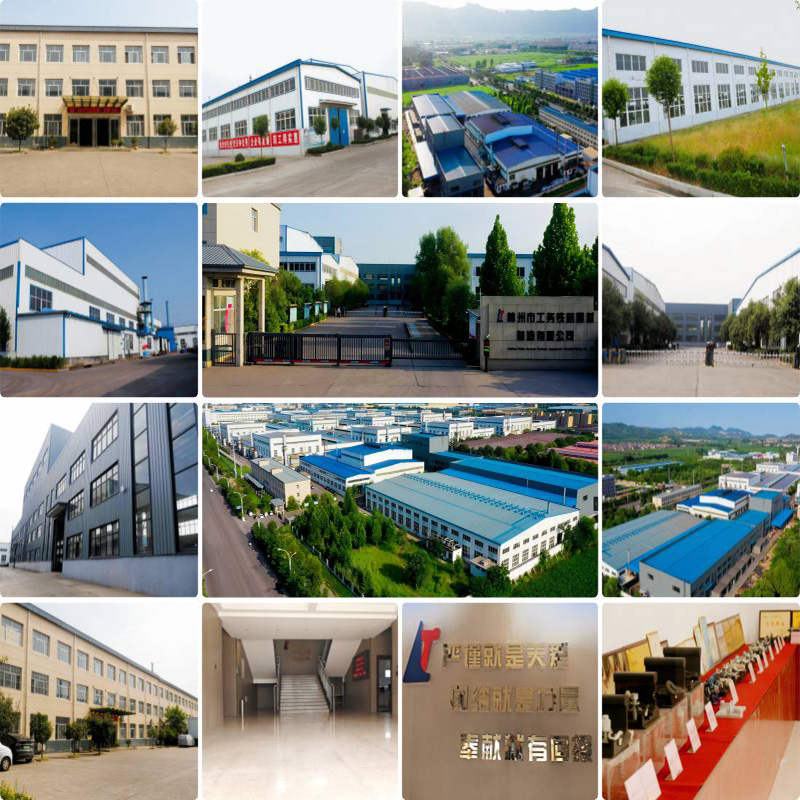

- Competitive Pricing + Superior Quality
LTRF controls the cost of each process, and the finance department updates the cost calculation regularly.
Furthermore, LTRF’s advanced testing equipment endows the company with comprehensive quality inspection capabilities for the entire fastener system. This meticulous quality-control measure is crucial for ensuring product reliability. Importantly, LTRF holds ISO and CRCC certification for railway products. These certifications not only demonstrate the company’s compliance with international and industry-specific standards but also enhance its credibility in the market.
